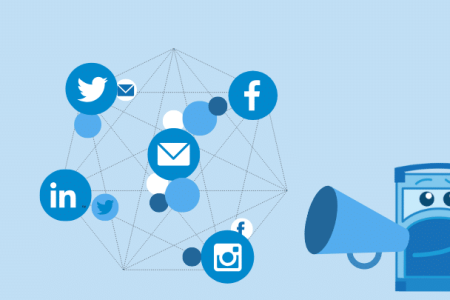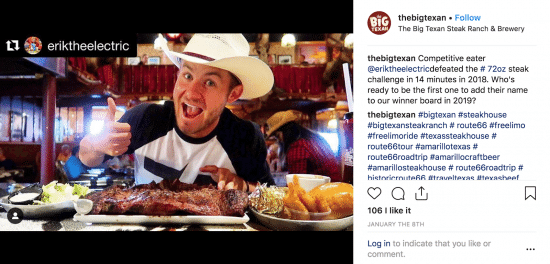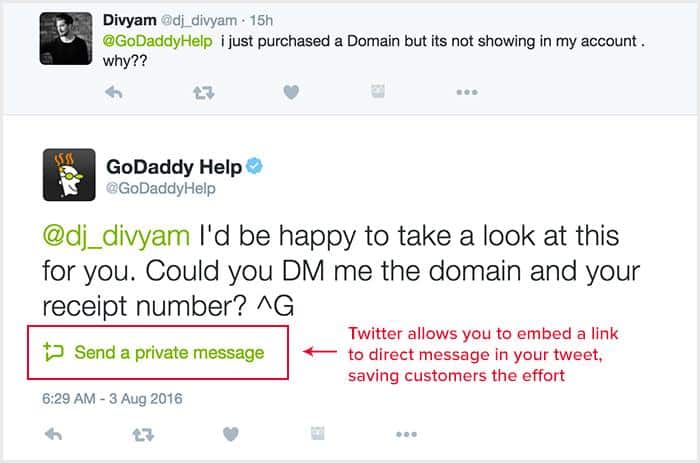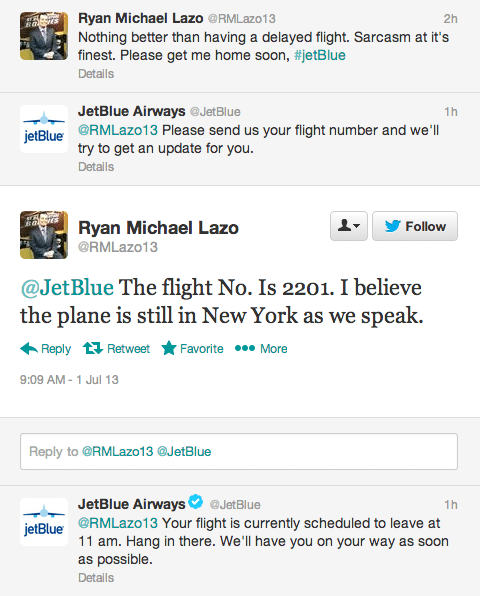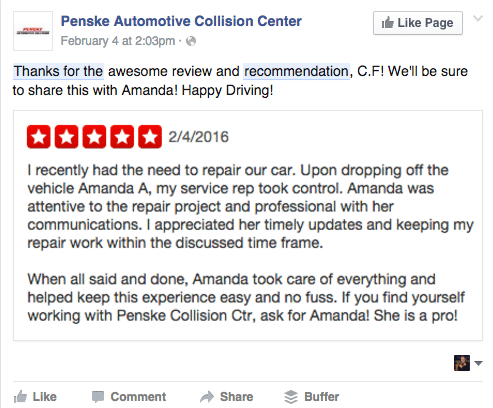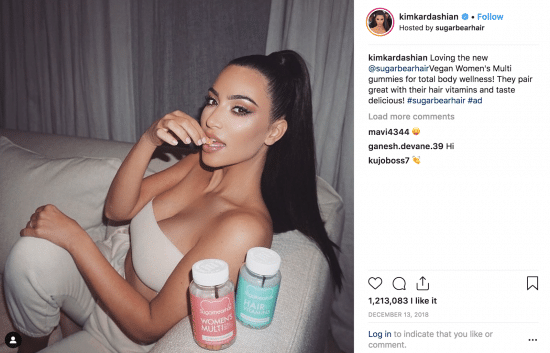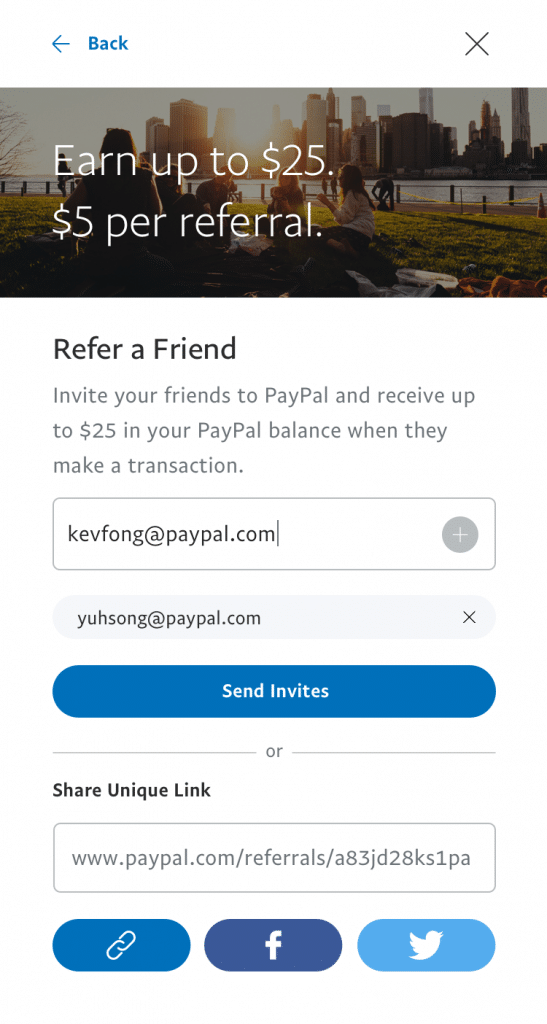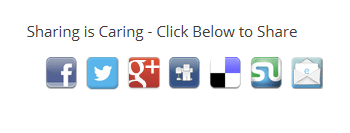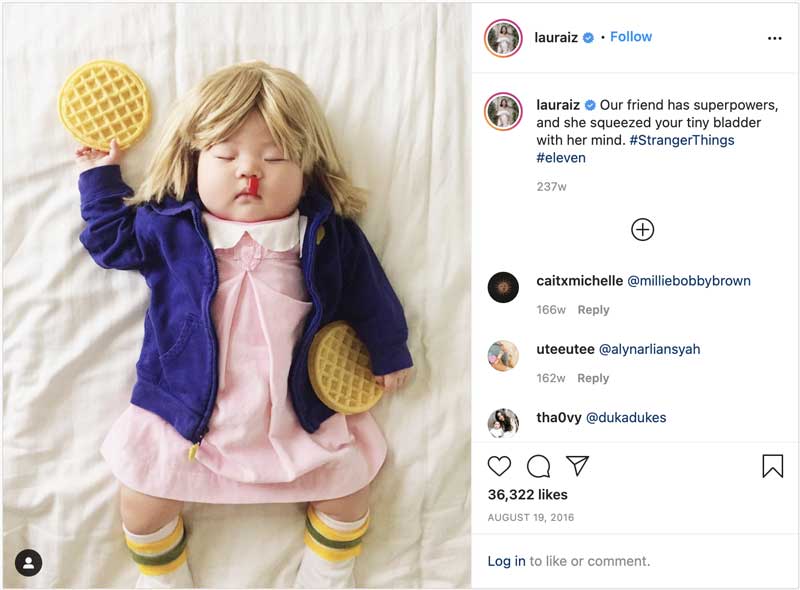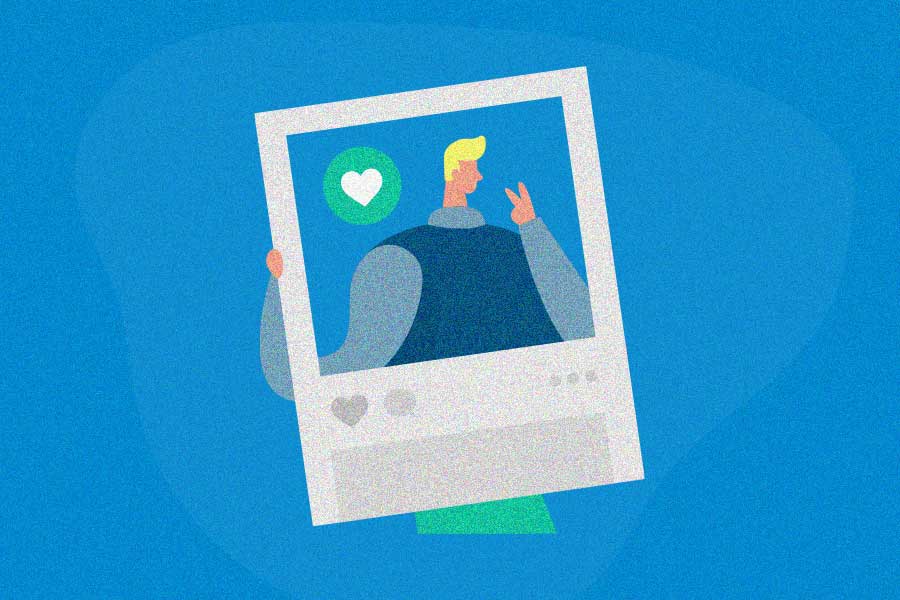Although word of mouth WOM happens everywhere, there is a clear link between social media and word-of-mouth publicity. The question is how effectively does social media start WOM?
People have always discussed the experiences they have had with brands, services, and products. These types of word of mouth statistics exist to prove it. These discussions are now being held via social media, further contributing to WOM, as social media has a higher, faster and real-time reach when compared to traditional, offline WOM.
With social media, a customer’s opinion or experience with a product or service is no longer limited to one-on-one conversations. Thousands of people can engage in a conversation about a brand, at the same time.
Part of the research before making a purchase is asking for recommendations from friends or communities on social media. A good example here is the Facebook feature, “looking for recommendations”. If a user posts that they are looking for recommendations, their friends will continue the conversation by giving a brand, individual service provider, or seller names.
Influencers on social media further contribute to WOM as they share and communicate with their followers. If they give a positive opinion or experience with a brand, they are going to stir further conversations about the brand.
Let’s look at the beauty industry as an example. Influencers will tag their tailors, makeup artists, and clothing designers. Their followers, who want to look good too are highly likely to engage in conversations about the brands, reach out to the mentioned brands on social media, contact them via calls, and even just visit the brand’s website.
Social media helps to package the message being delivered via WOM. This is because the recipient will only receive the information that is in line with their interest. For instance, one may have asked for a contact of a bakery in their location. Social media, therefore, helps to personalize the message making it more relevant to the user and thus creating effective WOM.
While it is not easy to measure the effect of social media on WOM, you can categorize the types of WOM your brand attracts, and see how social media contributed to each type. The various types you can look at are:
- Experiential WOM, where a customer shares a positive or negative experience with a brand, product or service.
- Consequential WOM, where customers are exposed to traditional marketing and then share the information about the brand or campaign on social media.
- Intentional WOM, where influencers are used to further trigger WOM.
How to generate word of mouth referrals for your business
In the previous section, we have looked at how social media contributes to WOM, and how effectively it achieves WOM. Let us now look at how to generate WOM referrals for your business, with a focus on social media.
Great customer experience
Customer experience has a lot to do with the kind of conversations that happen about a brand (experiential WOM). You need to ensure that these conversations are positive, and only generate positive WOM. Since they are many aspects of customer experience, you need to ensure that they are all taken care of.
You could do something special for your clients too. A simple illustration here is giving them a glass of water when they visit your store. Such a small action could make all the difference and be what customers will talk about on social media. If someone is looking for a product or service that your brand offers, you have a higher chance of getting WOM referrals.
Here is an example of a brand that did something special for their customers which ended up becoming incredibly popular, even decades later. Big Texan’s 72 oz Steak has remained the most popular item on the menu. How did this happen?
The owner realized that the huge Texas-size steaks were a popular menu item among the real Texas cowboys. The patrons and visitors enjoyed watching the Texas cowboys competing amongst themselves on who would eat the most meat. On one Friday, the restaurant owner told the cowboys to eat as much meat as they could in an hour, and see who would eat the most.
That’s how the 72 oz Steak challenge was born, and it lives on to this day. In fact, customers now wear t-shirts written: “I ate the whole thing”. The challenge has even made popular its own hashtag, #72ozsteakchallenge. The hashtag actually led to a lot of referrals because people would tag their friends in the comments after watching the video.
Focus and narrow down your audience
You need to communicate to the right audience if you are going to get WOM referrals. Narrow down to your ideal customer and build a community around them. Alternatively, participate in communities where your ideal customers are and provide value. Focus on helping people to solve a problem, for example.
Ask for referrals
You could request happy customers to share their experience on social media. This could be on their profile, your brand’s social media page, or even in relevant social communities. For instance, Facebook Groups, Twitter Lists, and LinkedIn Groups are great places to start. In order to encourage your customers to share their experiences, you can reward them for their referrals. This is where social media monitoring comes in.
Implement customer suggestions
A good example here is Hootsuite. In 2018, the brand announced that they had finally added a feature that 16 million customers had been requesting for – scheduling and publishing content on Instagram. This had not been possible on this particular social media platform.
While it may not always be possible to implement everything that customers want, you could use the received feedback to improve even a small aspect of your service or brand. When you do, you need to let the customers know. You could send a link to a blog post and possibly get a viral sharing effect. This will equip them with a shareable tool that they could use for WOM referrals or conversations on social media.
Stay consistent
Staying consistent could be the way to get WOM referrals if you cannot come up with something as unique as Big Texan’s 72 oz Steak. Aim at ensuring that your product or service results in the same experience, each and every time. If it is food or drink, it should maintain the same taste. If it’s a service and you always respond promptly, continue on with the same pace for every customer.
Respond
Responding to either positive or negative feedback is helpful for WOM referrals. Customers, even those who are frustrated can be a good source of WOM referrals. When you respond to frustrated customers, they are likely to mention you when a prospective customer inquires about service, product or brand and let them know how you handled their situation.
Identify people who talk positively about your brand
For example, happy customers who had a great experience using your brand or product and that keep talking about your brand aka giving you WOM referrals. Reach out to them and make them your brand ambassadors. You could reward them with freebies, discounts or even cash. This way, you’ll continue to get WOM referrals from them.
Sometimes, identifying these people may involve a little bit of work from your end. Sending a Net Promoter Score (NPS) is one way to identify your biggest fans. Note the people who give you a score of 9 and above. Use an advocate marketing platform to send your big fans (those with high NPS ratings). Ultimately, settle for those who stay engaged to the end.
Other channels that can help you get WOM referrals
Social media is not the only way to get WOM referrals, though it plays a significant role. Other ways that you could explore are creating a WOM sales referral program, speaking at industry events, the creation of valuable content (videos, infographics, articles and blog posts), attending local events, and helping others out (referring other people to relevant brands and professionals in person or on social media).
Who is more likely to spread positive word of mouth about your brand?
Like we have seen, happy customers are likely to become your best brand advocates. In this section, we look at other people who are more likely to spread positive WOM about your brand.
Happy customers with a level of influence on social media
While you may have many loyal and happy customers, you need to be strategic when it comes to choosing your brand advocate. Your brand advocates need to have a substantial presence on social media. In fact, they are what you would describe as being ‘vocal’.
They also need to communicate well, be credible, and passionate. Otherwise, people will not take what they say seriously. The ideal brand advocate should not shy away from talking about a brand that they like. They should understand the brand, have a sense of pride when it comes to your brand, and want to genuinely help you achieve your goals. Moreover, they are quick to defend your brand should anything go wrong.
Employees
Your employees can promote your brand, especially through social media. Employees have personal profiles on different social media platforms, sometimes even on those that your brand has no absolute presence.
An employee can also be interviewed on traditional media (TV and print), which will create publicity for both them and your brand. They may attract partners that can help you push your brand further (we will look more at partners later).
An effective way to get your employees to become your brand’s advocates is to create an employee advocacy program. Before you start thinking about the program, there are a few things that need to be in place. Let’s look at them briefly.
- Company culture – the employees need to feel that they are in an environment that they can trust (where they are appreciated for contributions made, where communication is clear, where expectations are set high to motivate them, where there is transparency about the organization’s goals, vision and mission, and where there are opportunities for growth and learning).
- Request the employees to participate, do not force, coerce, mandate or threaten them.
- Employee benefits – how will the advocacy program benefit the employees? The employees will definitely stand out as thought leaders in their industry. Beyond that, the organization should reward them, with a promotion for being the company’s advocate. The benefit could be as simple as crowning the best brand advocate as “the employee of the month”.
- Make it easy and fun to participate – you may ask the employees to come up with creative ways to announce a new product, service or feature. The participation needs to be tracked so that the winner can be seen by all, with no controversies. A leader board will be great for tracking.
- Involve them in the process – you may ask them what they would like for an incentive.
Once the above 5 things have been taken care of, it’s important to have KPIs and goals for the advocacy program, guidelines when posting on social media, and a brief on social media do’s and don’ts. It is necessary to have a team to help the employees to enroll and participate in the program, and help them with any challenges that they may come across.
Automating will definitely make things easier. Advocacy software will come in handy. Check out examples of advocacy software.
Business partners
Your business partners (vendors, suppliers, service providers) are another group of people who can help you spread positive WOM about your business. You could request them to write something about your brand or product.
This could be an article that helps your customers but recommends your product or service. You need to send them materials that they can use to talk more about the brand – product samples, pamphlets, brochures, and your company’s brand kit. You could also co-create content with your partners, for instance, webinars, newsletters, videos, articles, podcasts, or even co-host events. This way, both parties benefit from the partnership.
An example would be an IT company that interviews its digital marketing service providers. They could do a question and answer interview, where they talk about how digital marketing integrates with a particular IT product, and how the IT company benefits from the digital marketing skills offered by their partner.
Note that partnerships can go beyond the partners that you directly work within your business. They could be other businesses, not even related to your industry, but that target the same audience that you do. An example could be a hospitality brand partnering with an entertainment brand to co-create content or co-host an event.
Influencers
People use influencer recommendations before buying products or using services, all the time. Influencers are therefore a group of people who can help generate positive WOM for your business, as we call it influencer marketing. You can pay influencers to talk about your product. Or alternatively, you can send them products for free to use and share their first-hand experience. You’ll definitely want to identify the right influencer for your business.
Getting involved in a worthy cause is also a way to attract influencers to speak positively about your brand. You could have a product that is eco-friendly or an approach that supports the community around you. An example here could be donating or giving to charity.
Industry experts
How can industry experts help spread positive WOM for your brand? When people are researching products or services before purchase, they not only read reviews and testimonials, they also look for content pieces that are not necessarily created by a brand and its team, but by someone who knows the industry well.
Industry experts can come in to create additional content that can lead potential customers to buy. The experts can also engage in conversations where potential customers are looking for recommendations about a brand, product or service.
How interest shapes word of mouth over different channels
While there is a focus on WOM, there is less focus on what shapes it. People tend to talk about a product that they are interested in. They also talk about products that are interesting. People talk about products that make them better versions of themselves, and products that offer benefits.
The question is, do the channels that people use to talk about a product or service determine the conversations that happen around that product? Let’s explore this in this section.
While interest in the product and the benefits it offers the user have a lot to do with WOM, the discussion will differ from channel to channel. In order to understand how a channel can determine WOM, it is important to understand why people talk about products, beyond being interested in them.
- Social acceptance or recognition – people are driven by the need to have a sense of belonging. Participating in WOM is one way to do that. Beyond being interested in a product, people will talk about it in order to “belong” to a group or social circle. When done via written communication as in a social media post or comment, the conversation is more detailed and properly constructed.
- The need to stand out – people want to stand out from their groups. WOM is one way to do so, beyond discussing interesting products and experiences. When people discuss products, they stand out. If the discussion is done orally, there is less pressure to stand out. The conversation is, therefore, less constructed, and only products or brands that are top of mind will be mentioned. If the people with the motivation to stand out are experts in their field, they become thought leaders in their niche via WOM.
- The motivation to do something good – people like to do something good, for the benefit of another person. This could be achieved when a product is discussed with the intent of helping someone achieve a goal, solve a problem, or to simply put a smile on someone else’s face. If the motivation is to do something good, a channel like social media will result in a more comprehensive discussion, in order to be celebrated by the individual and his or her friends. If it is oral, the discussion might be less elaborate, but with a more personal touch.
As you may have noted, the reasons why people discuss products or services can overlap. These, beyond product interest, contribute to WOM. The channel of communication also determines the extent to which the WOM will be done.
How technology and mobile affect word of mouth marketing
People have always talked about products, services, and brands. WOM is simply something that humans do. Technology and social media platforms have made it easier to tap into this natural human concept, scale it and even see ROI from it.
Measurability
Paypal is one brand that has seen a massive benefit from WOM. The brand acquired 100,000 users within the first month. How did this happen? They used a referral program. Making it easy to see who is coming from where.
Their approach was simple. Every time someone signs up for Paypal, they receive $20. If that person refers a friend, they would receive another $20. How much did the company give away as a result of their referral program? Between $60 and $70 million. In the third quarter of 2018, Paypal had 254 million accounts, all thanks to their shareable and social media friendly referral program.
Whether WOM is done via social media, referral programs or reward programs, technology along with social media have made it easy to measure WOM to see the ROI.
Shareability
Technology has made it possible for people to talk to hundreds or even thousands of people in a day, or even at the same time. Most of these conversations happen online on social media, and most people access their social profiles via their mobile devices.
When a brand taps into this and comes up with a reward program, they can easily notify their customer base via CRM software, and pretty soon their customers are sharing via social media.
Not just links are being shared either. These types of technologies have made it easy to share all content types, videos, infographics or images, for example. Making word of mouth a simple task, where influencers, customers, brands, literally anyone can share information about their favorite tools, products, and brands.
Automation
Technology helps in automating WOM marketing, for example, sending a receipt email or message immediately after purchase. It helps in automating loyalty/reward programs, reducing purchase friction. An example is MyPanera loyalty program where members are able to save preferences and payment details in order to earn rewards.
Automation can also help you regularly remind people to refer. You can schedule posts to ask your followers to join your rewards program or simply ask them to refer or share. You can also automate social media ads to run for certain days and to focus on a particular segment of people, helping you increase your visibility and possibly your word of mouth reach too.
How to use the power of social media and word-of-mouth marketing
We have seen how social media helps to amplify WOM. In this section, we look at how to use the combined power of social media and WOM.
User generated content (UGC)
An example here is Netflix. Laura Iz, a mom began to take photos of her daughter and would Instagram her as different characters. Netflix was able to use this content to create this image: which was in line with their series, “Stranger Things”. Brands can use UGC and weave into their message to increase WOM.
When it comes to UGC, you need to choose the platform to focus on, and even the kind of content that is suitable for each platform. You need to understand what you can do with each platform. An example is Instagram where you need to know concepts like “regraming”.
UGC can also result from efforts made by the brand, for instance when a brand runs a contest and then users participate by sharing content. It could be a photo competition or short video clips competition. You could also ask your audience to use a particular hashtag when responding to your contest. You may want to be a bit careful though when asking for UGC, as people may post content that violates intellectual property. Here’s an example of a situation from a photographer versus a brand using UGC.
UGC is closely linked with product ratings, reviews, testimonials, and influencer posts. Customers will share their experiences, good or bad. If good, they will give 5-star reviews and positive comments. When a product has one review, you increase the chances of purchase by 65%. You need to share USG. You can post testimonials on your website. Influencers, especially when they get to use products or services, they will share their honest experiences. All these need to be seen as aspects of UGC and need to be managed by the brand.
Prompt customer engagement
You need to engage your customers as promptly as possible. One way to do this is by tracking mentions. You could track your competitor’s mentions too. This way, you are able to know when a conversation about your brand is happening and see how to join it. Fast response to complaints and compliments will also come in handy.
Referral/reward program promotion
After creating your referral or reward program, you need to promote it for people to join. One of the ways to do that is via social media. If you have a Facebook or LinkedIn Group made up of your fans, you could start by sharing the information about the program there. You can then post it on the platforms that your brand has a presence.
In fact, social media can become a point of reward where people share the link or information about the program and get a reward. Social media can also be used to reach out to influencers and share information about your brand. This way, the referral/reward program will create conversations around your brand, resulting in WOM.
We looked at several ways that you can generate WOM referrals for your business, and the same concepts are applicable when it comes to leveraging the power of social media and WOM. What we have looked at here are only additional strategies.
How social networking sites are more effective than word of mouth
Traditional word of mouth is effective but with the rise of social media, everyone has more reach than ever.
Social networking sites have a high reach and are measurable
We have just looked at how to use the power of both WOM and social media. The question then becomes, is social media more effective than WOM?
Let’s begin by looking at a few statistics.
- Facebook had 236 million active users and LinkedIn 128 million active users in 2017. You can never achieve such reach with traditional WOM.
- An average consumer will mention brands at least 90 times each week to his or her network of family, friends, and colleagues, via social media. This would be no mean feat to achieve via traditional WOM.
The numbers here show that social media has a massive reach that would be difficult to achieve via traditional WOM. Social media is also easy to measure. It will be difficult to measure traditional WOM as not every person will walk into a store and say that their purchase was as a result of WOM. Other people may not buy even after WOM.
Having looked at aspects like social media being measurable, having a higher reach and increasing shareability, it is easy to see that social media is more effective when compared to traditional WOM.
In conclusion
We have explored social media and the WOM concept that has been around as long as humans have lived, and how the two need to work together for the best results. We have looked at the people who are more likely to generate positive WOM for your brand on social media, and how interest shapes WOM. It is now time to explore WOM and social media and see how best to integrate them into your brand’s marketing efforts.
